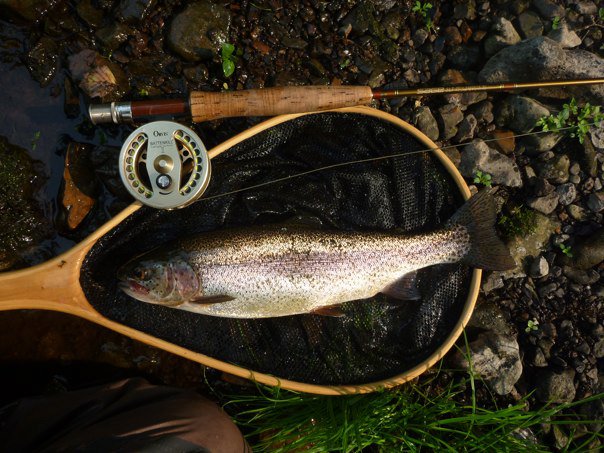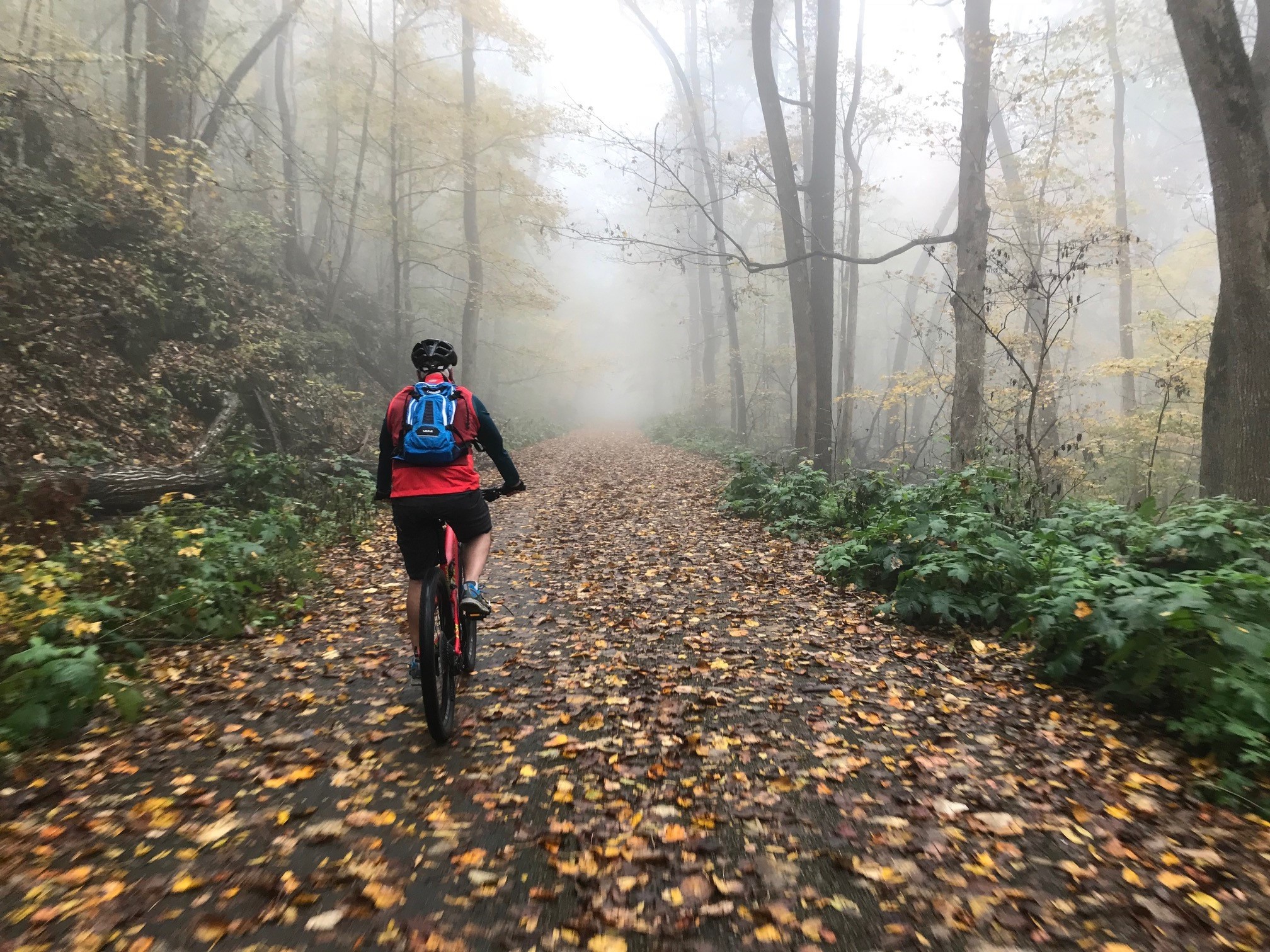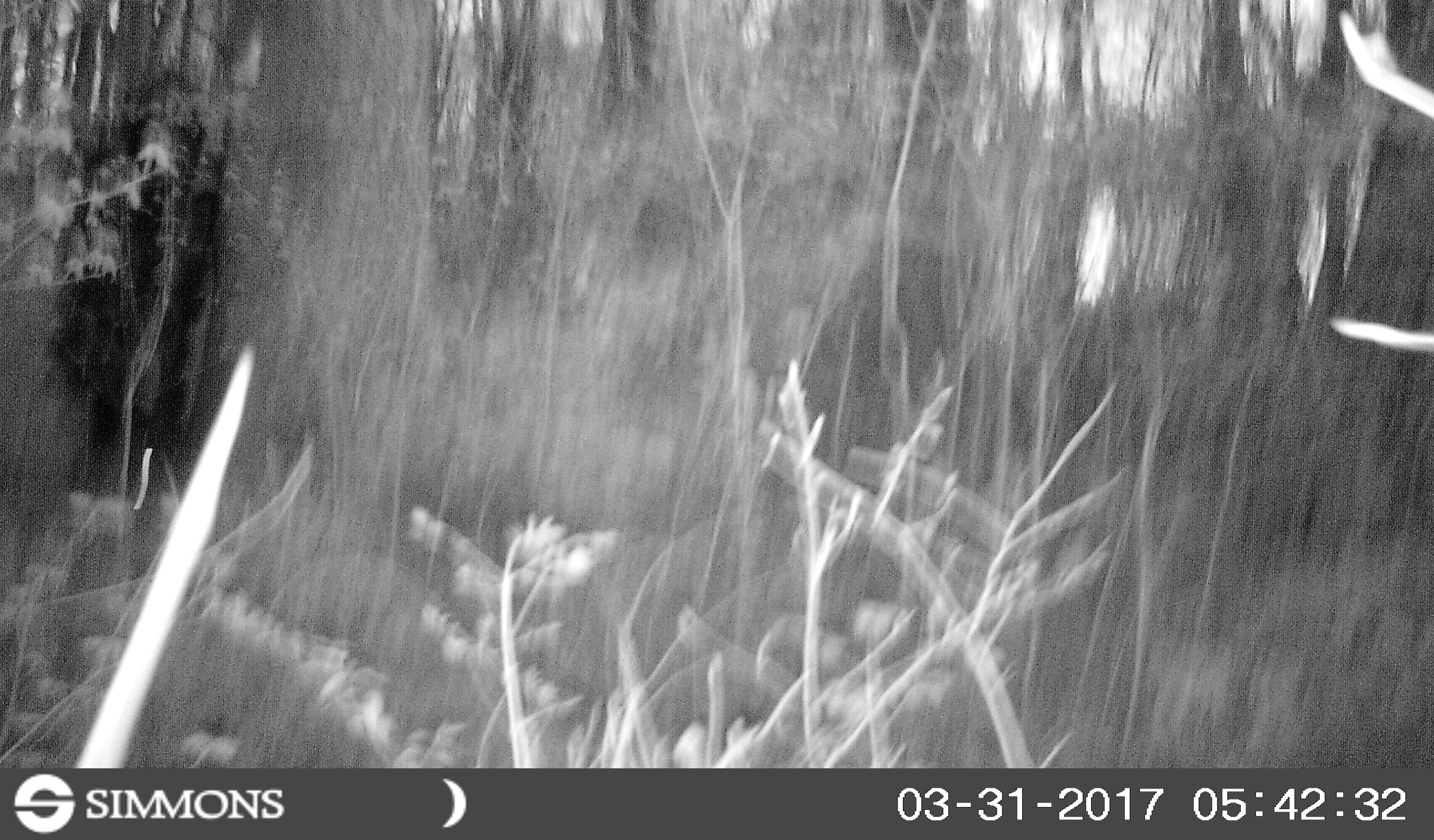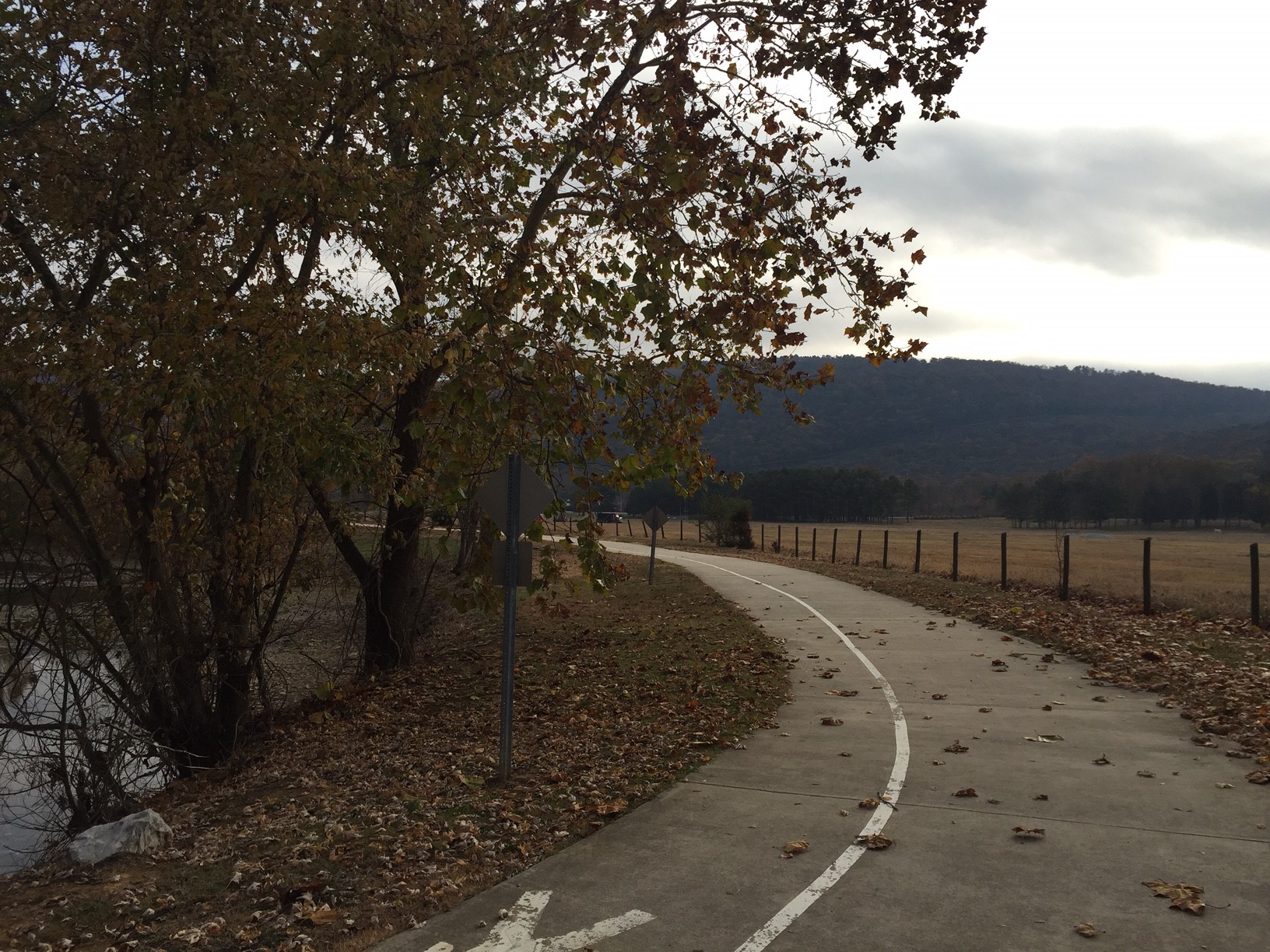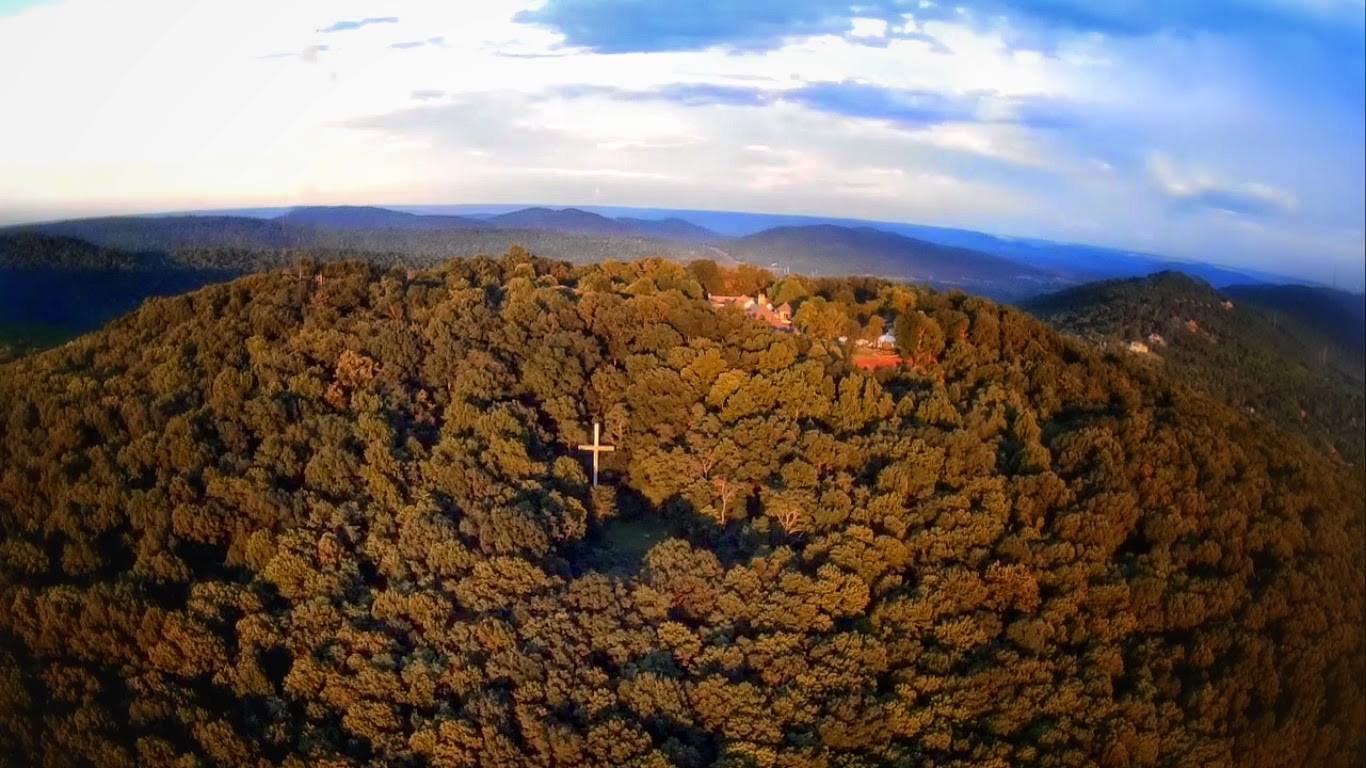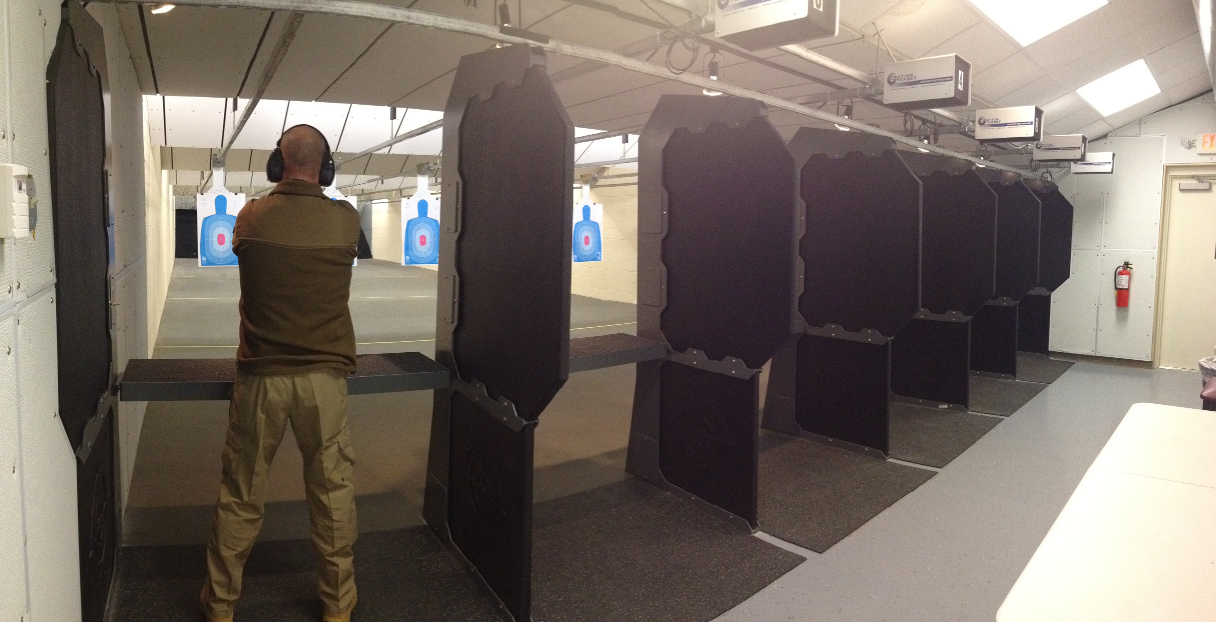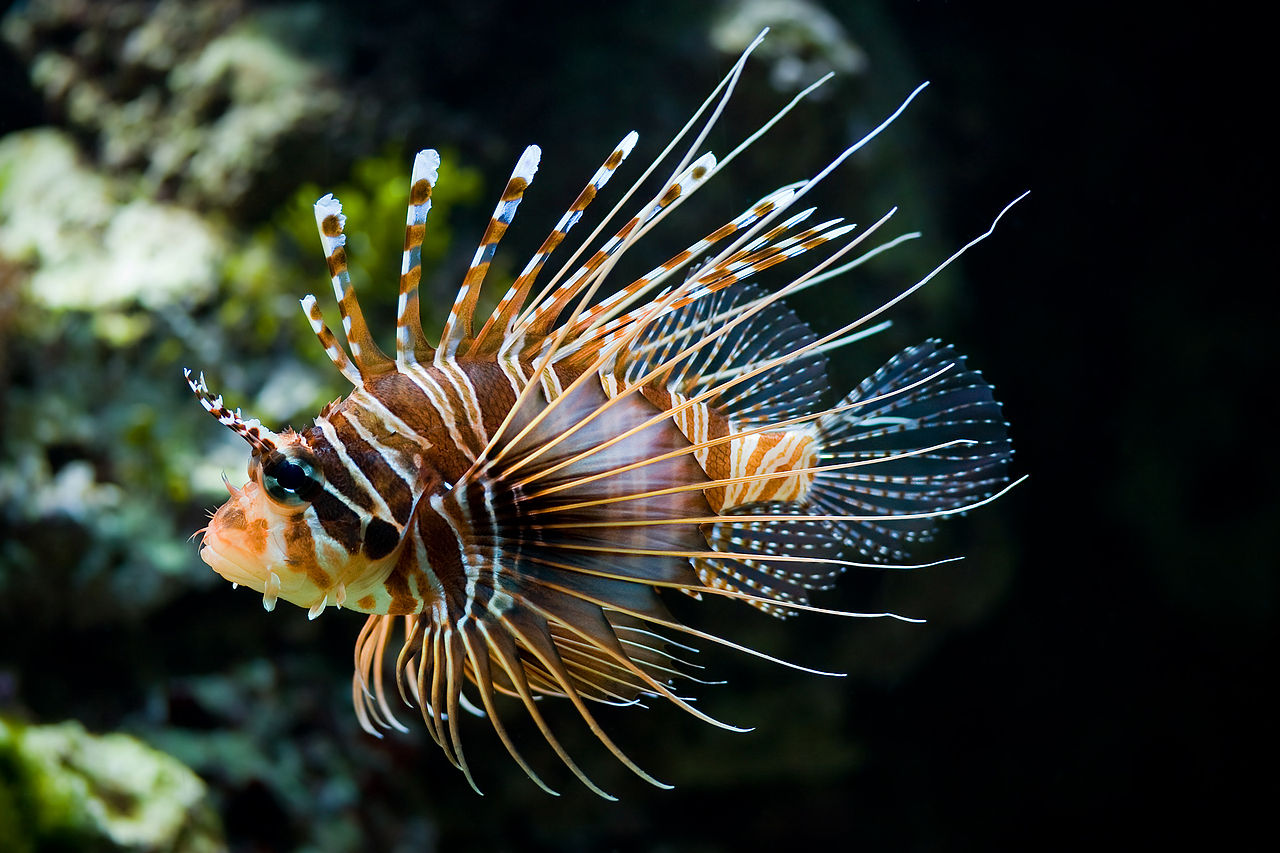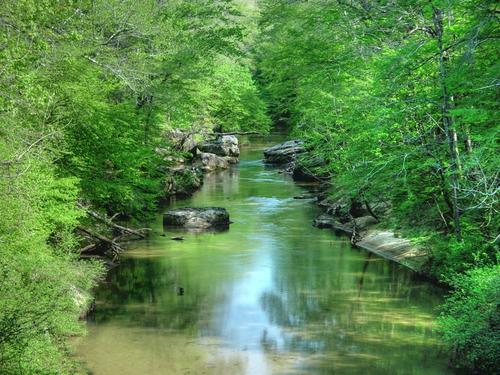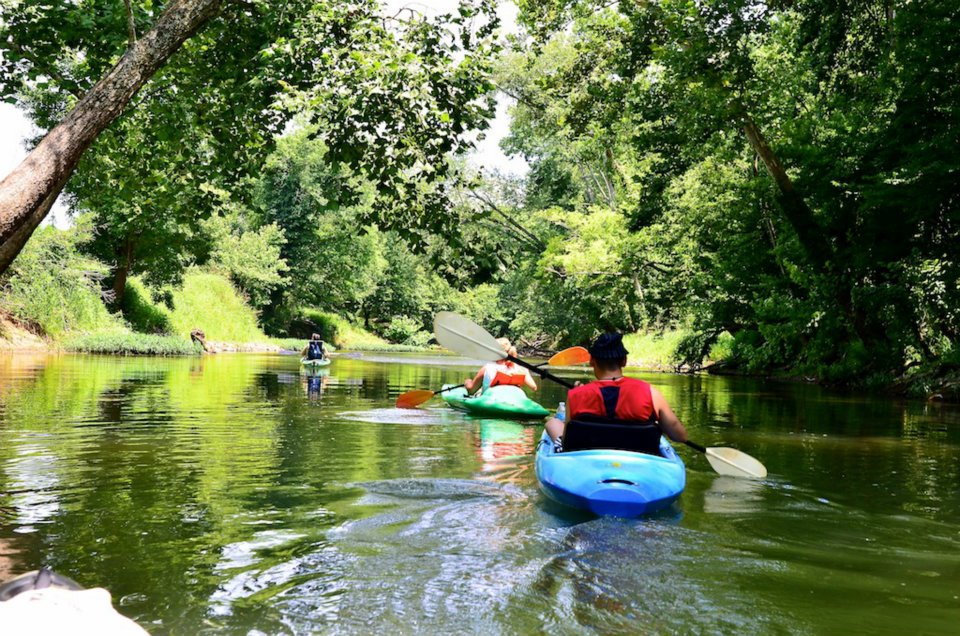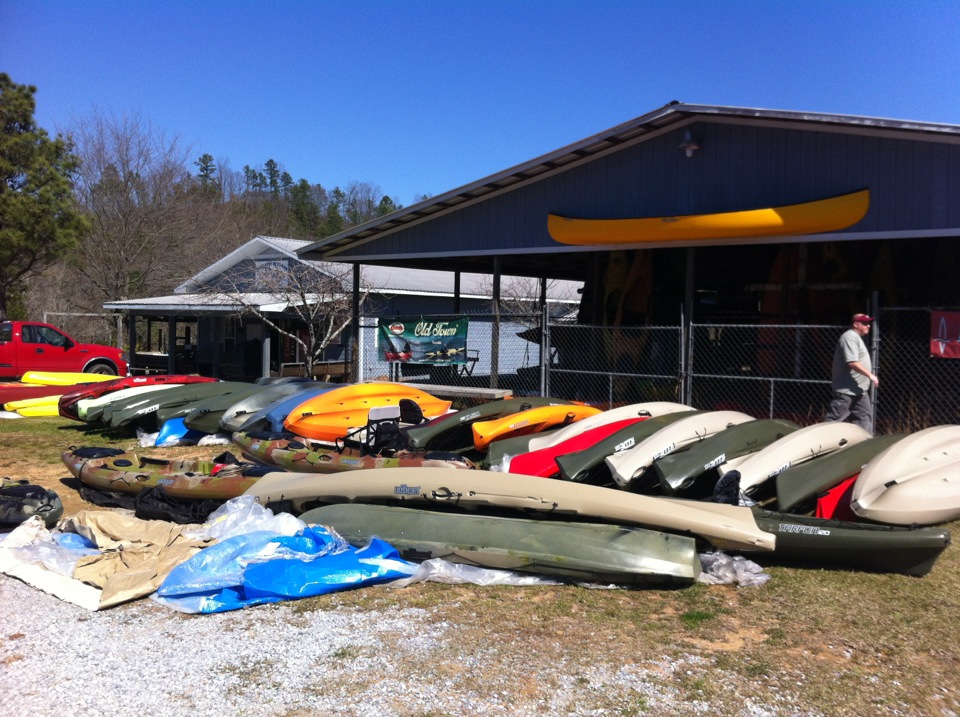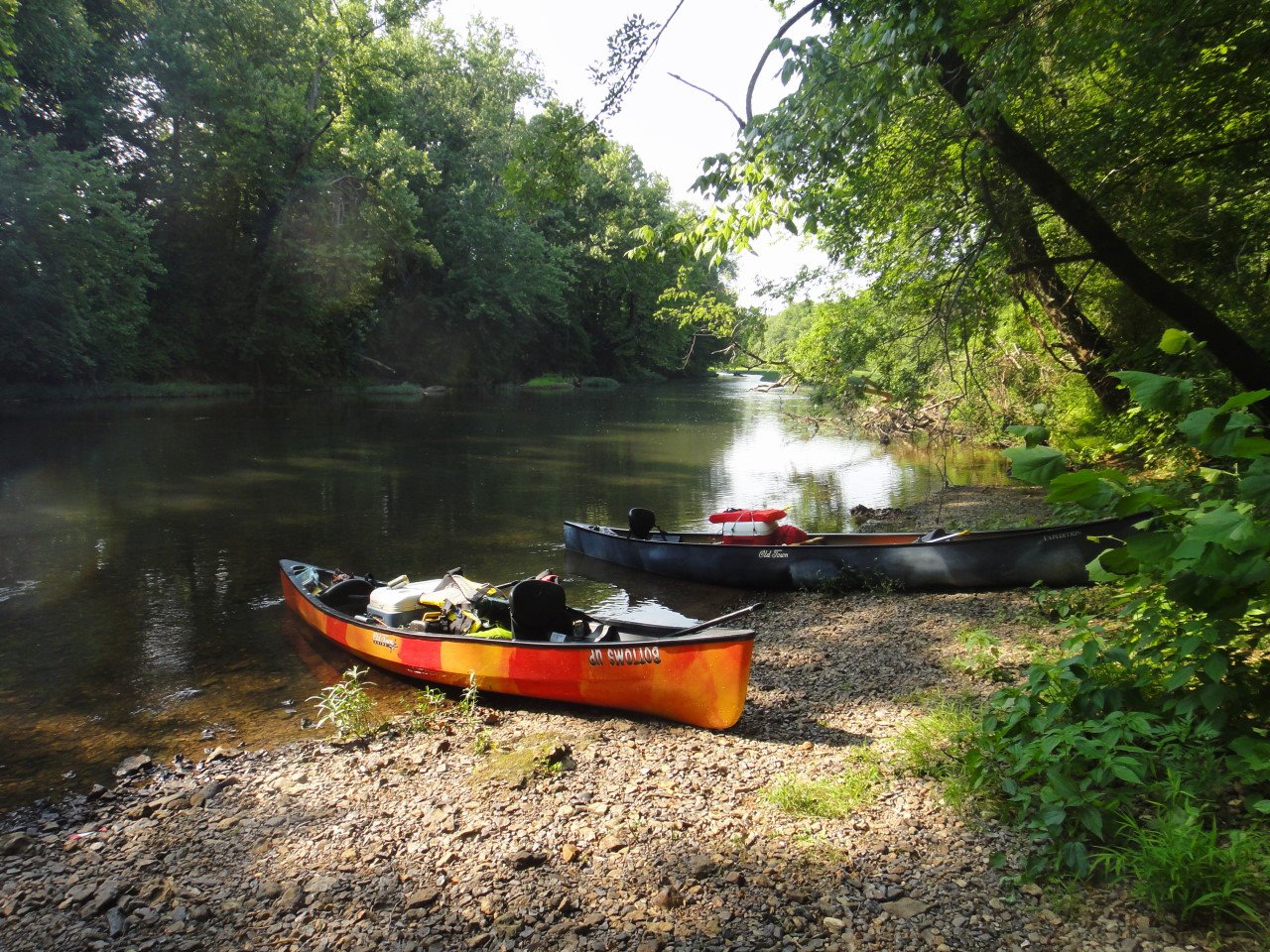Huntsville Outdoors is pleased to present this article by guest columnist Robert C. Lockwood:
Most people associate fly fishing with trout fishing. When the sport really got popular about 20 years ago, with the release of "A River Runs Through It," that was a pretty accurate perception. And don't get me wrong … I love to fly fish for trout. But, the fact of the matter is that the vast majority of water in North Alabama is simply too warm to support trout, which thrive in temperatures that don't exceed 75 degrees. Don't despair, though, because Huntsville Outdoors has all the information you need to fly fish in the North Alabama area, even for trout.
In this article, I will talk about the two-closest locations for trout fishing. I'll also discuss fly fishing that's available right out your back door. Quite simply, if you use a spinning rod to catch fish, you can use a fly rod in the same location. If you check out Cabela's or Orvis, you can buy flies for almost any species of fish. So, whether it's a big river out West or a bass pond in your back yard, you can catch fish with a fly rod.
I'm not going to discuss anybody's honey-hole. In fact, I've covered very little of the available water in North Alabama. I prefer to fish for trout and will drive the hour (plus) to get to them. I welcome any suggestions that anybody has for good, public, fishable water closer to Huntsville.
Also, please understand that I don't claim to be a fishing expert. I like to fish. I try to fish at least one day a month. I think about fishing every day. But, I know I'm not that good in the grand scheme of things. Think of this article as a very basic overview of the necessary equipment for fly fishing and a few basic locations in North Alabama.
Equipment
I remember watching some outdoor-type show as a kid and seeing somebody fly fishing. I always thought it was pretty cool and wanted to try it. But, I lived in Middle Georgia and grew up bass-fishing the neighborhood ponds with rubber worms and Rappalas. For some reason, in early 2000 I decided I was going to start fly fishing. So, I picked up the phone and called Cabela's. The conversation went something like this:
Cabela's: Hello, sir. How can I help you?
Me: I want to buy a fly rod?
Cabela's: Well, what weight fly rod do you want?
Me: I don't know.
Cabela's: Well, what length rod do you want?
Me: I don't know.
Cabela's: Well, what action fly rod do you want?
Me: I don't know.
Cabela's: Well, where do you live?
Me. I know this one. Huntsville, Alabama
Cabela's: That's near Lake Guntersville, isn't it?
Me: Yes.
Cabela's: Well, you probably want a 6-weight rod, which is good for catching bass down there.
Me: Ok.
So, that's how I got my first, and least-used fly rod. A six-weight rod is a fabulous rod for good-size bass, and I bet my Cabela's rod could handle up to an eight-pouder. Unfortunately, the sad reality is that I'm just not going for fish that big very often.
In fact, there are few places in North Alabama where you would need a six-weight rod. If you expected to fly fish for big bass on Guntersville, you might want one. Otherwise, I highly recommend using a four-weight rod. This is a good all-around size rod that can handle fish up to three pounds. I also recommend that it be 8-and-a-half or 9 feet long.
For newcomers, the "weight" of a rod actually refers to the weight of the fly line that will be cast. The thicker the line, the heavier the weight. The heavier the weight, the higher the number of the weight. Fly rods are designed to cast particular weights of line. I could spend this entire article discussing line weights, rod materials, and the "action" of a rod.
Just know, the lighter the rod, the better the fight from smaller fish. Since most of the fish in the streams I will be discussing are smaller fish, I recommend a 4-weight if you buy one rod. Even so, I typically use my 3-weight when I am fishing area streams.
Finally, spend the minimum amount of money possible on a reel. Big fish that pull line get put "on the reel." That rarely happens with the smallish fish we will be catching. Instead, you will actually retrieve line by hand and the reel is mostly a storage device for your line
Cabela's has some great starter kits. They are reasonably priced and have everything you need to get started.
Flies
If you only buy one fly -- buy the Wooly Bugger. Don't ask me what a Wooly Bugger is supposed to imitate. Nobody knows. But, everybody knows that they catch fish. In particular, we are concerned with trout, bass and bluegill/sunfish. The Wooly Bugger will catch them all. It's a simple fly. You cast it out and then retrieve it with short (4 to 6 inch) pulls on your fly line. The Wooly Bugger is my go-to fly for bass.
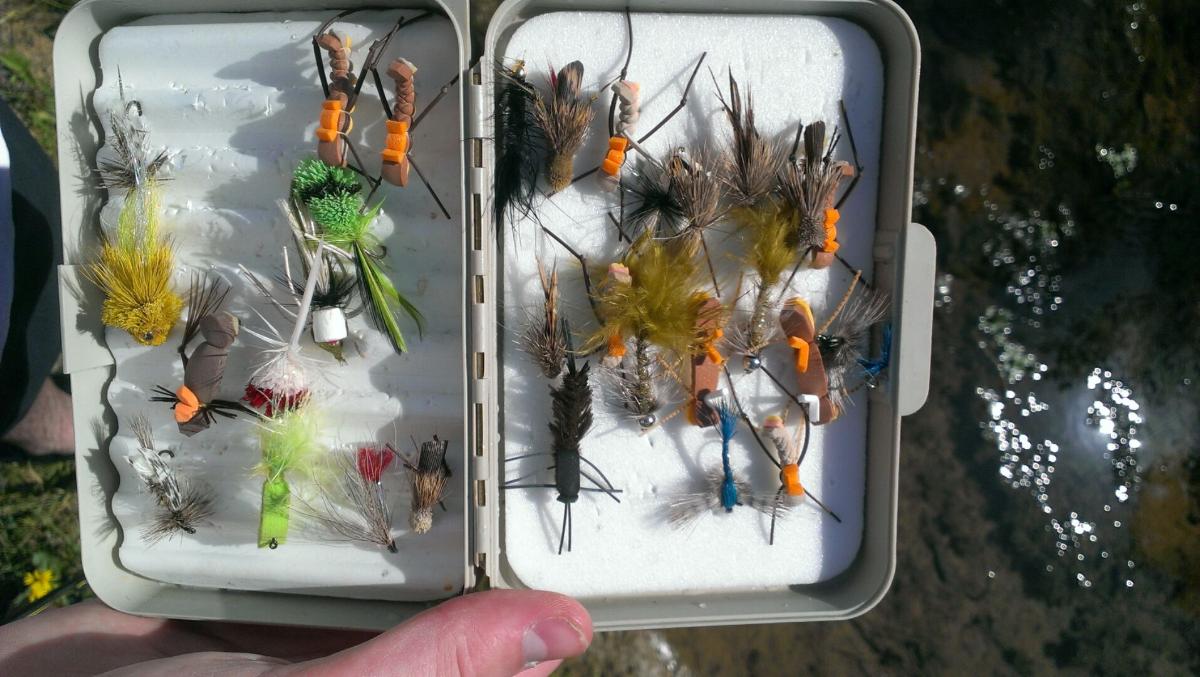
For trout on the Elk and Sipsey Fork, buy some San Juan Worms. These are simply a piece of red string tied to a hook -- designed to imitate the abundance of aquatic worms found in the stream. I also highly recommend zebra midges in black and red. A large portion of a trout's diet are tiny midges that hatch on these tailwaters (water below a dam).
Finally, get some bluegill poppers. When local creeks are overgrown with aquatic weeds, these will ride on top of the water and avoid a lot of the gunk.
Streams
Aldridge Creek
If you want to catch fish in the next 15 minutes, load up your vehicle and drive to Aldridge Creek. Most people probably know that Aldridge Creek starts on Jones Farm and flows South to the Tennessee River. The farther South, the bigger the creek.
Basically, find an access point along the Aldridge Creek Greenway and hop in. One of the greatest days of my life (from a numbers point of view) was about ten years ago. My father died the week before and I just didn't feel like working. So, I drove down to McGucken Park on Bailey Cove Road and hopped in the creek. Using a bluegill popper, I caught a fish on virtually every cast. The spiritual side of me is convinced that the guy who introduced me to fishing was helping me that day.
Lately, I've been fishing for bass with my son. Bass of varying sizes will be found in almost any semi-deep part of the creek. By deep, I mean a foot and a half. I have two pieces of advice. Look for drainage pipes that dump stormwater into the creek. Typically, the area bellows these pipes is deeper and will hold a couple decent size fish.
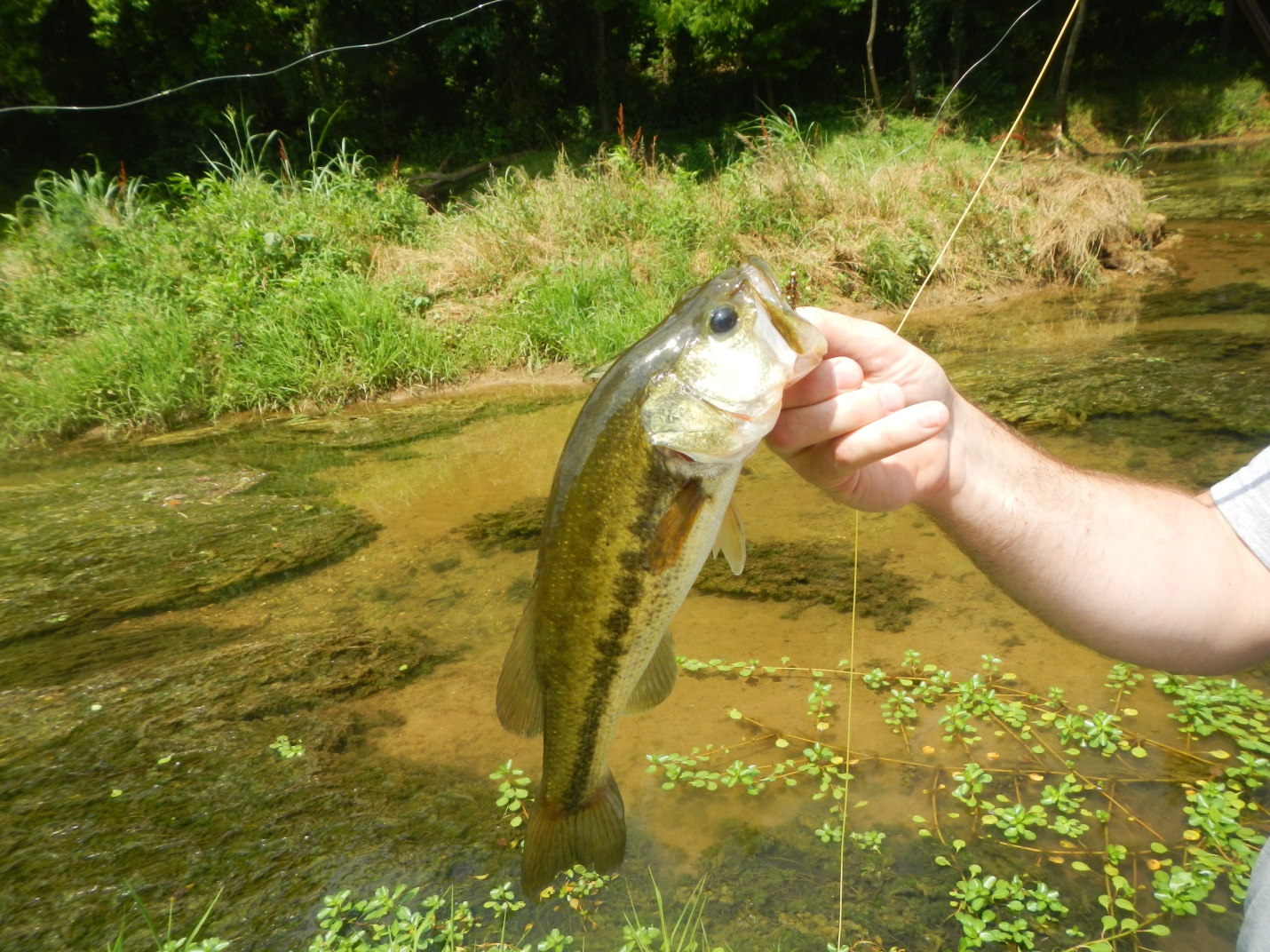
Second, take your time. There are good fish right along the bank. Walk North along the Aldridge Creek Greenway and look for the bass. They are usually facing upstream. Sight fishing to a 1-pound bass on a 3-weight rod is a lot of fun.
If you are a big-game fisherman, Aldridge Creek might not be for you. Mostly, you will catch bluegill, which a friend calls the "Cow of Fish" because they are so stupid and willing to eat. But, I've seen a 5 pound bass in one-foot water. That will get your pulse racing.
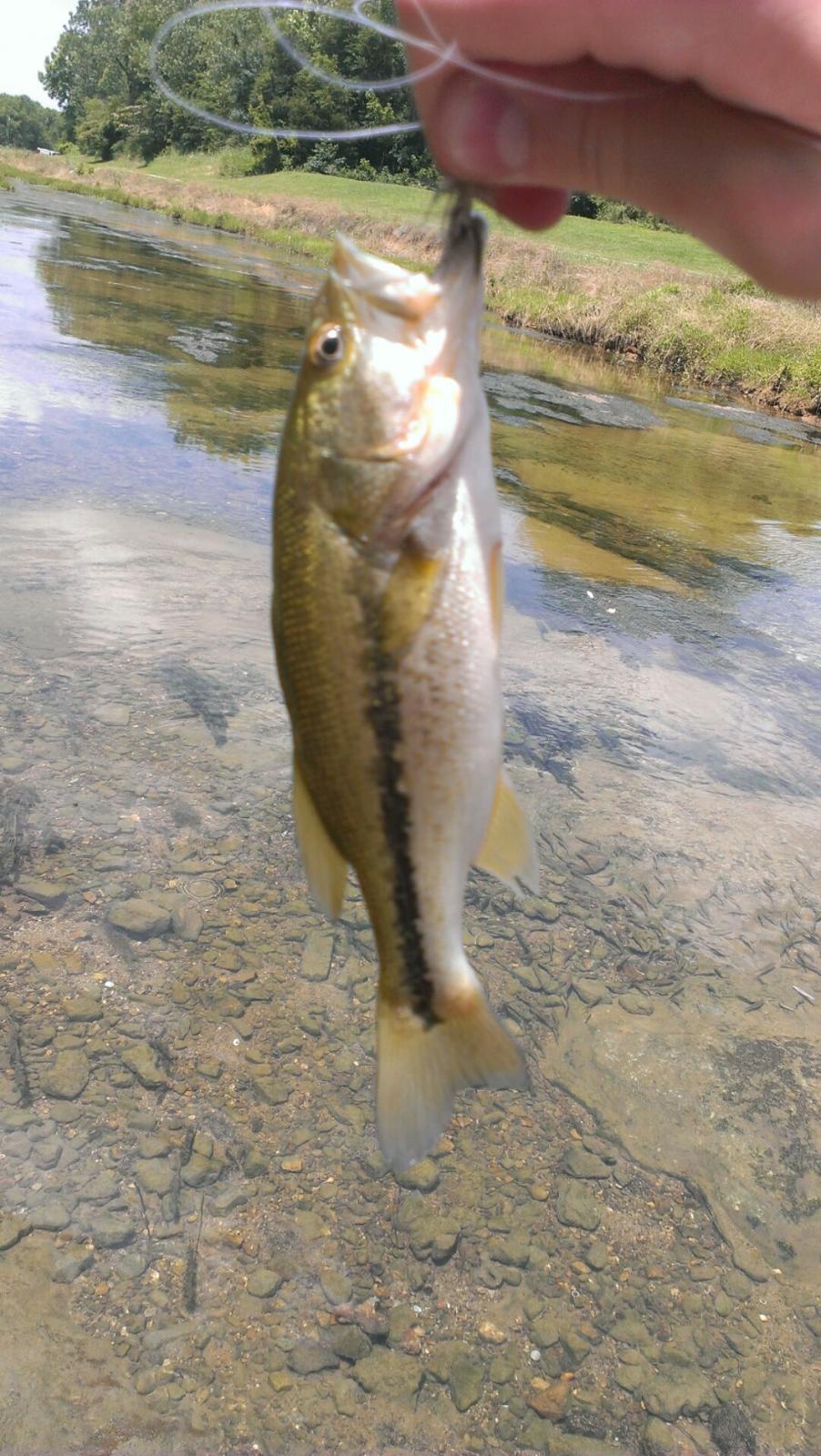
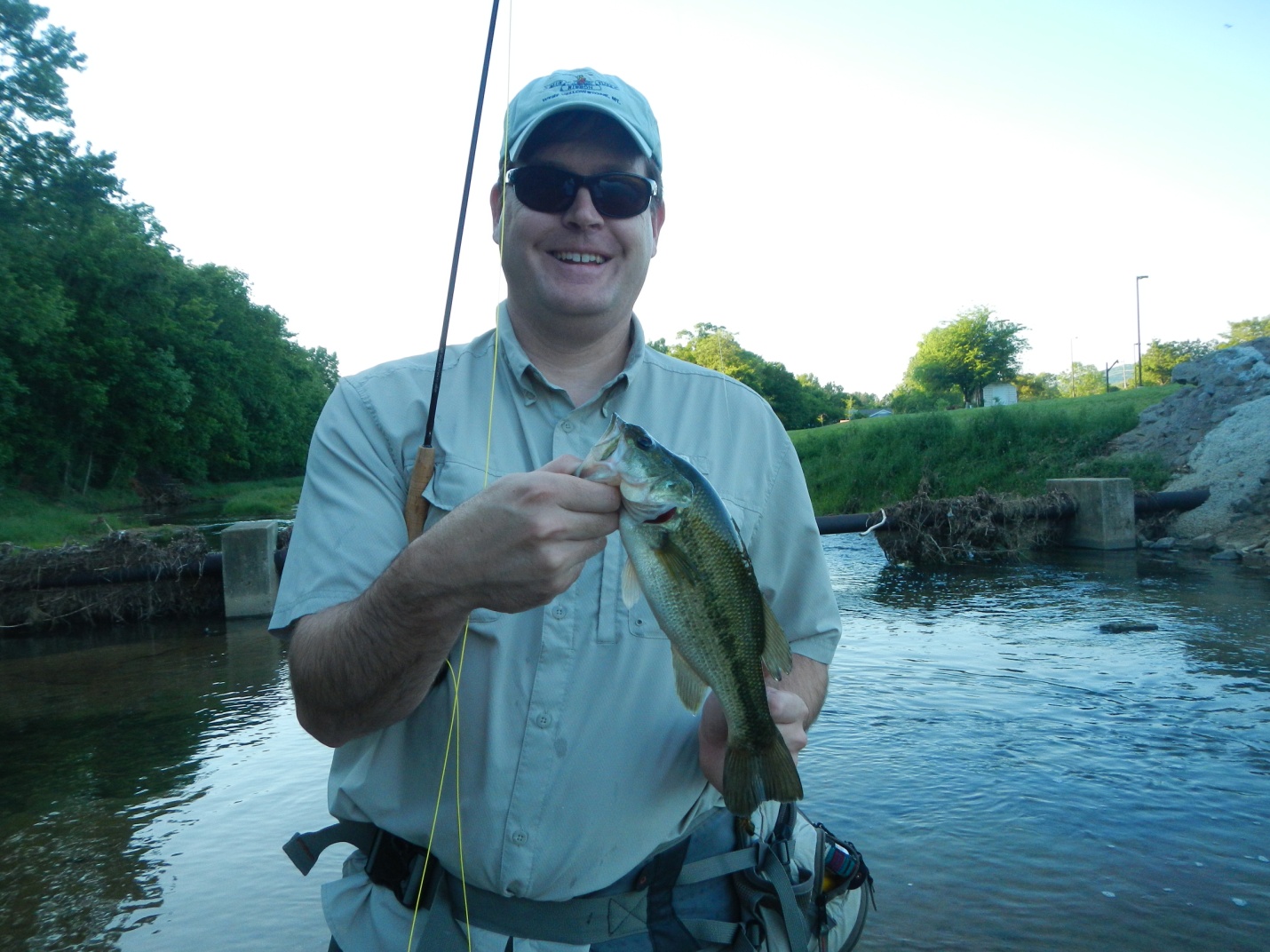
Disclaimer: While I love to fish, I don't like to eat fish. Even if I did, I would be hesitant to eat anything caught in Aldridge Creek. You will see a lot trash in and around the creek, and I personally question its purity.
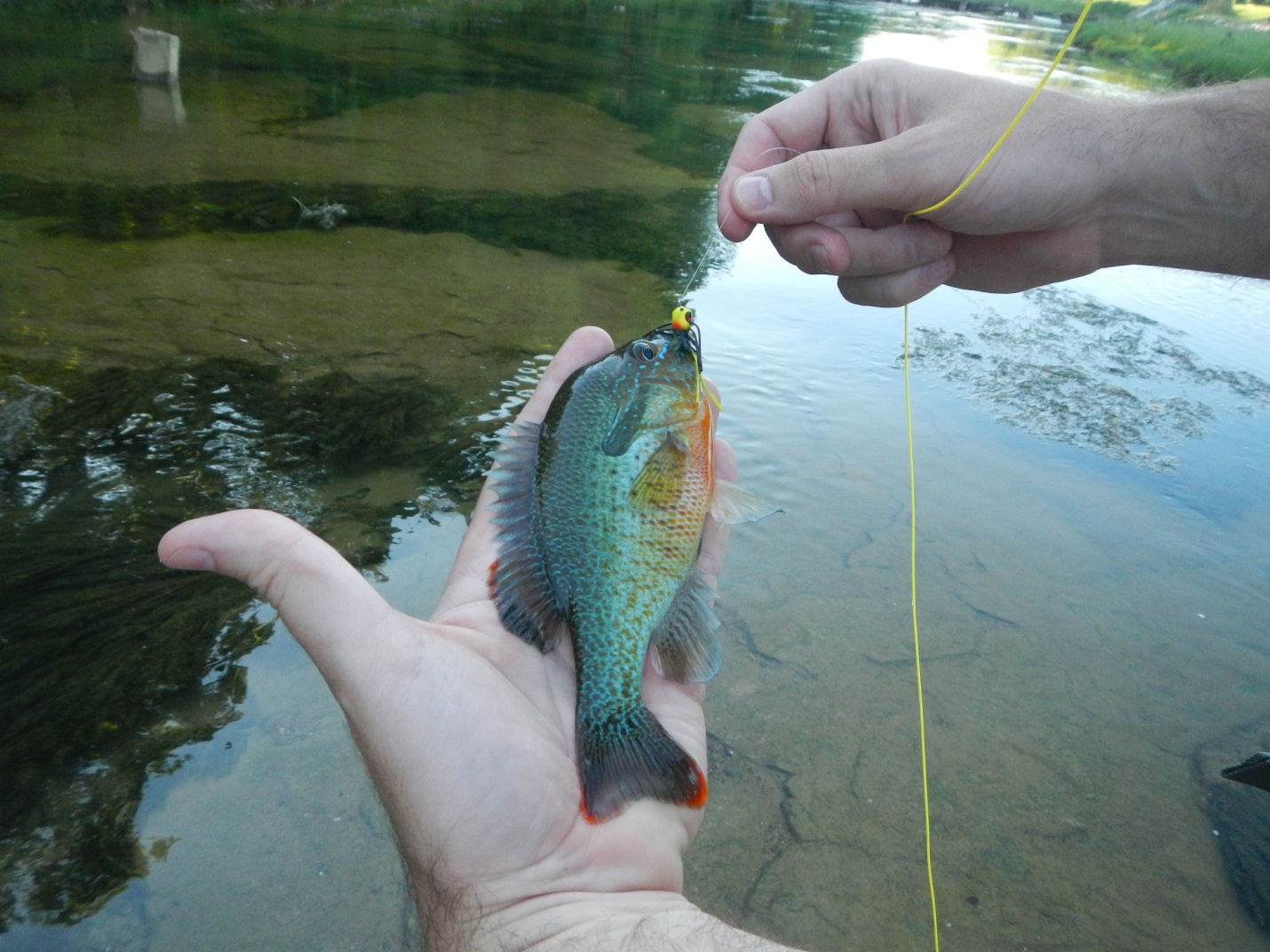
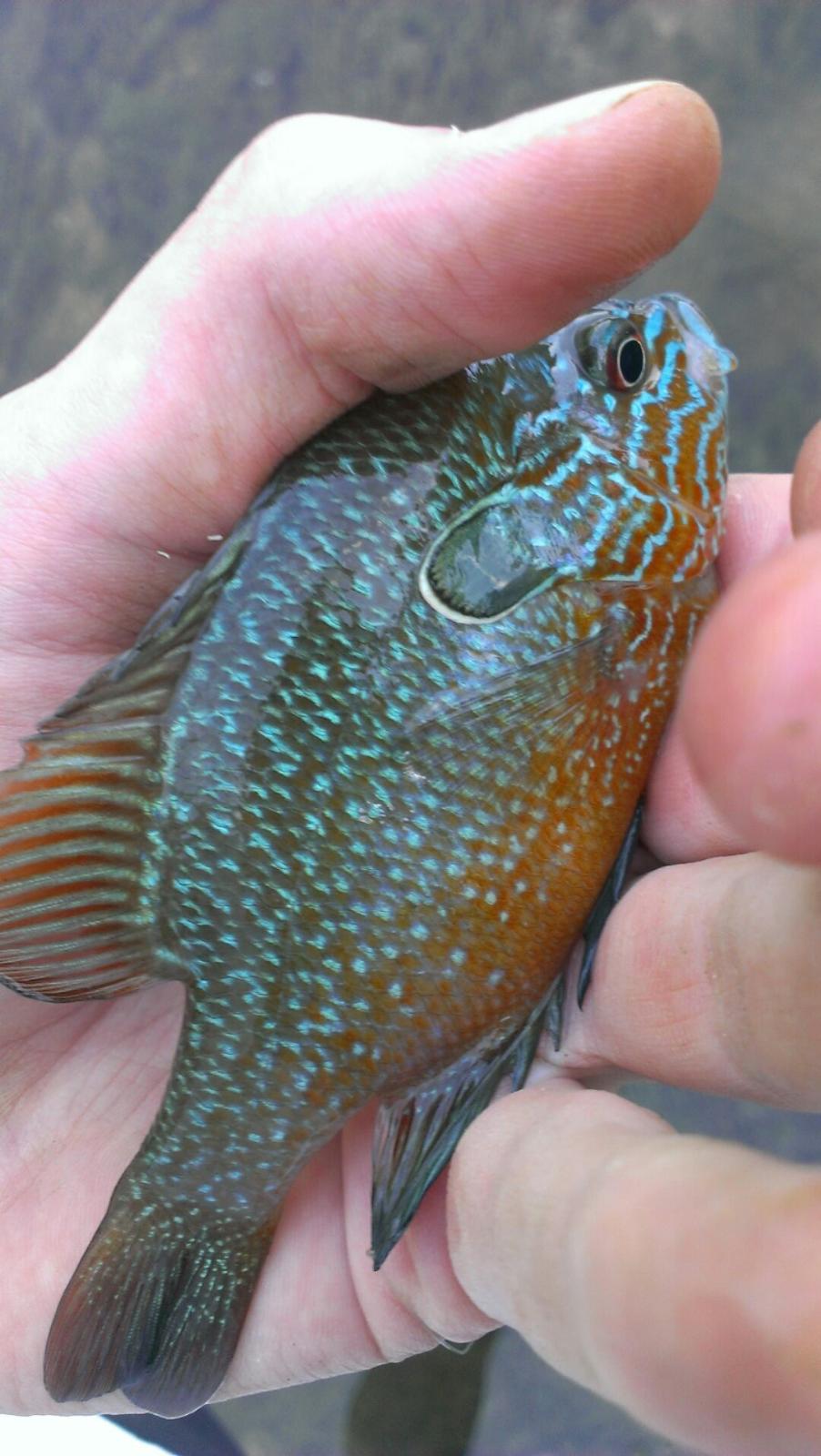
Flint and Paint Rock River
My experience on the Flint is limited and non-existent on the Paint Rock. But, I've heard good things about both. According to reports, the Flint might or might not have some smallmouth bass. But, both rivers are supposed to have bass that will hit bass poppers. I've only caught bluegill on the Flint. Check the articles elsewhere on this site for information on floating these rivers, which is probably the best way to access the fish.
Smallmouth Waters
Hard Core fishermen will tell you that smallmouth bass fight harder than any other fish pound-for-pound. So, naturally, I'm interested. My research indicates that most good smallmouth water is closer to the Shoals. I've read reports of smallmouth in Blue Water Creek, and I know folks who have caught them in Cypress Creek. Years ago, I saw Rocky Drake show where he was wading for smallmouth in a small creek using crawdads. He indicated that he was closer to Huntsville than the Shoals. If anybody has suggestions on public water close to town for smallmouth, I'd love to hear about it.
Trout Rivers
If you want to fish for trout, you have two options within an hour-and-a-half drive.
Elk River
First, my preferred water is the Elk River below Tim's Ford Dam. Water from Tim's Ford Lake is released from the bottom of the dam. It is cold enough to support trout for miles downstream. The Tennessee Wildlife Resource Agency stocks trout in the river several times a year. This is a "put and take" river. They put the fish in, you take them home. There is no natural reproduction of trout that I know of.
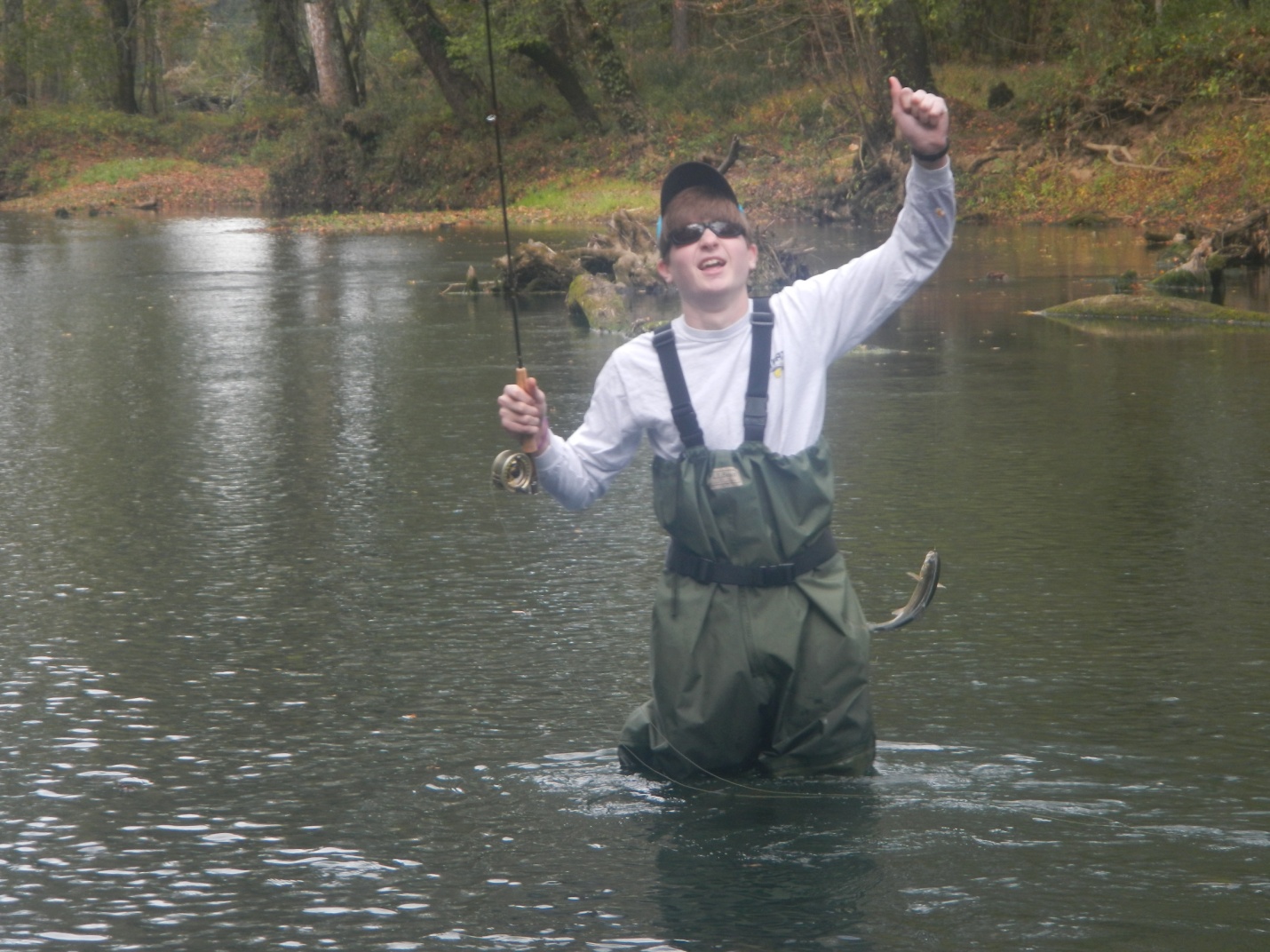
Most fish will be in the 8-inch to 10-inch range. This is your typical "stocker." These fish are recently introduced to the river and (sometimes) eager for a meal. There are holdover fish. I've seen pictured of big brown trout that I would guess are in the five-pound range. These are exceedingly rare. A good fish on the Elk is a 14" fish. That size fish will put a good-bend in your 4-weight.
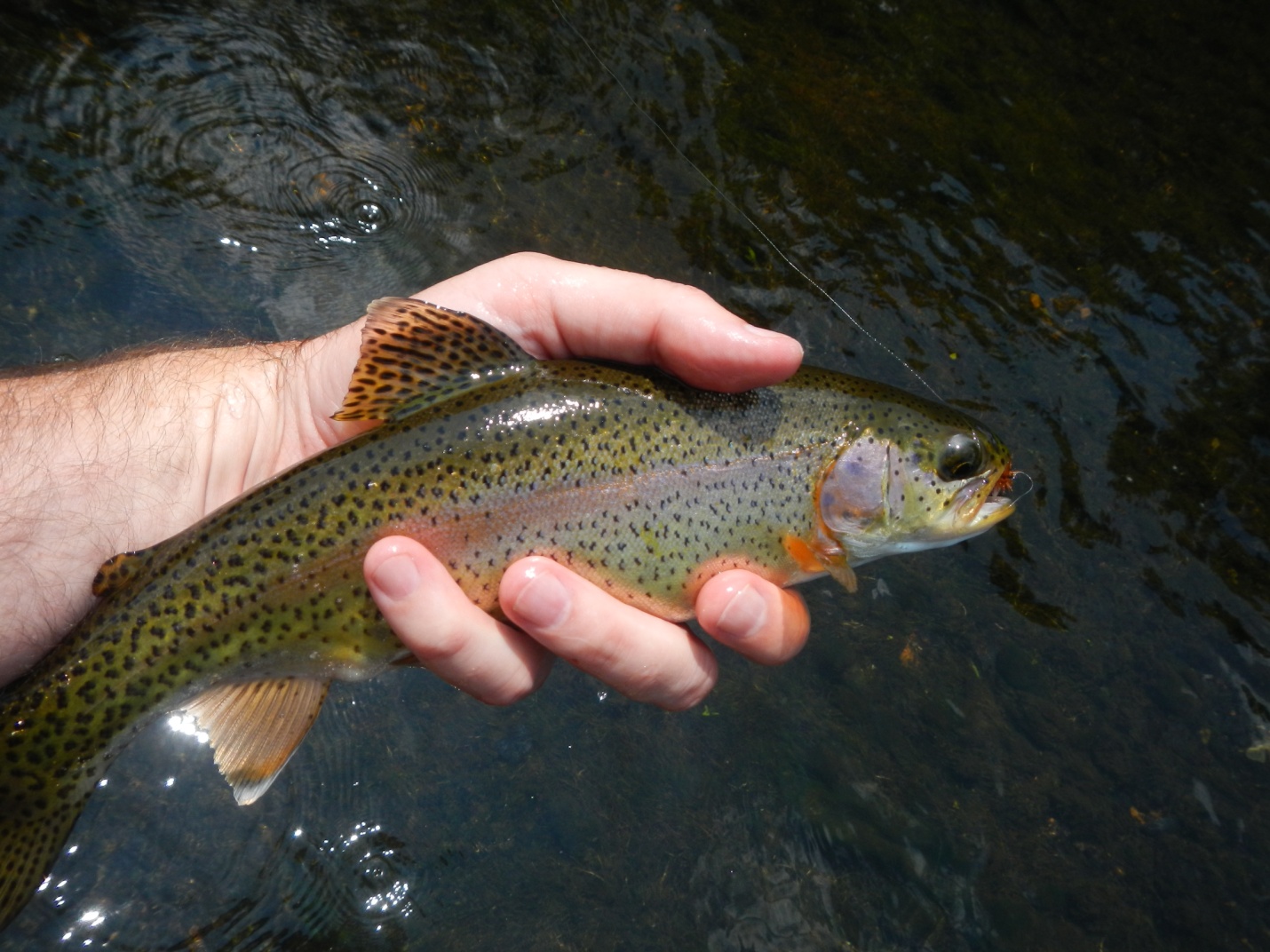
The Elk (and the Sipsey) require slightly different tactics from warm -water fishing. In warm water, you will typically cast your fly and then give it "action" by retrieving it. In these tailwaters, you are usually going to let the current do the work for you. Cast you midge or San Juan Worm upstream at a 45 degree angle and let it drift down. Typically, you will have a "strike indicator" (known as a "bobber" in Middle Georgia) that will tell you when a fish eats your fly.
The two most popular places to fish the Elk are at Tim's Ford Dam and Farris Creek Bridge. If you've ever driven to Tim's Ford Lake, you have probably taken State Road 121 up to State Road 50. On the way there, you will come to a Stop sign at Lexie's Crossroads. If you turn left at that sign, the river and Farris Creek Bridge will be several (winding) miles down the road.
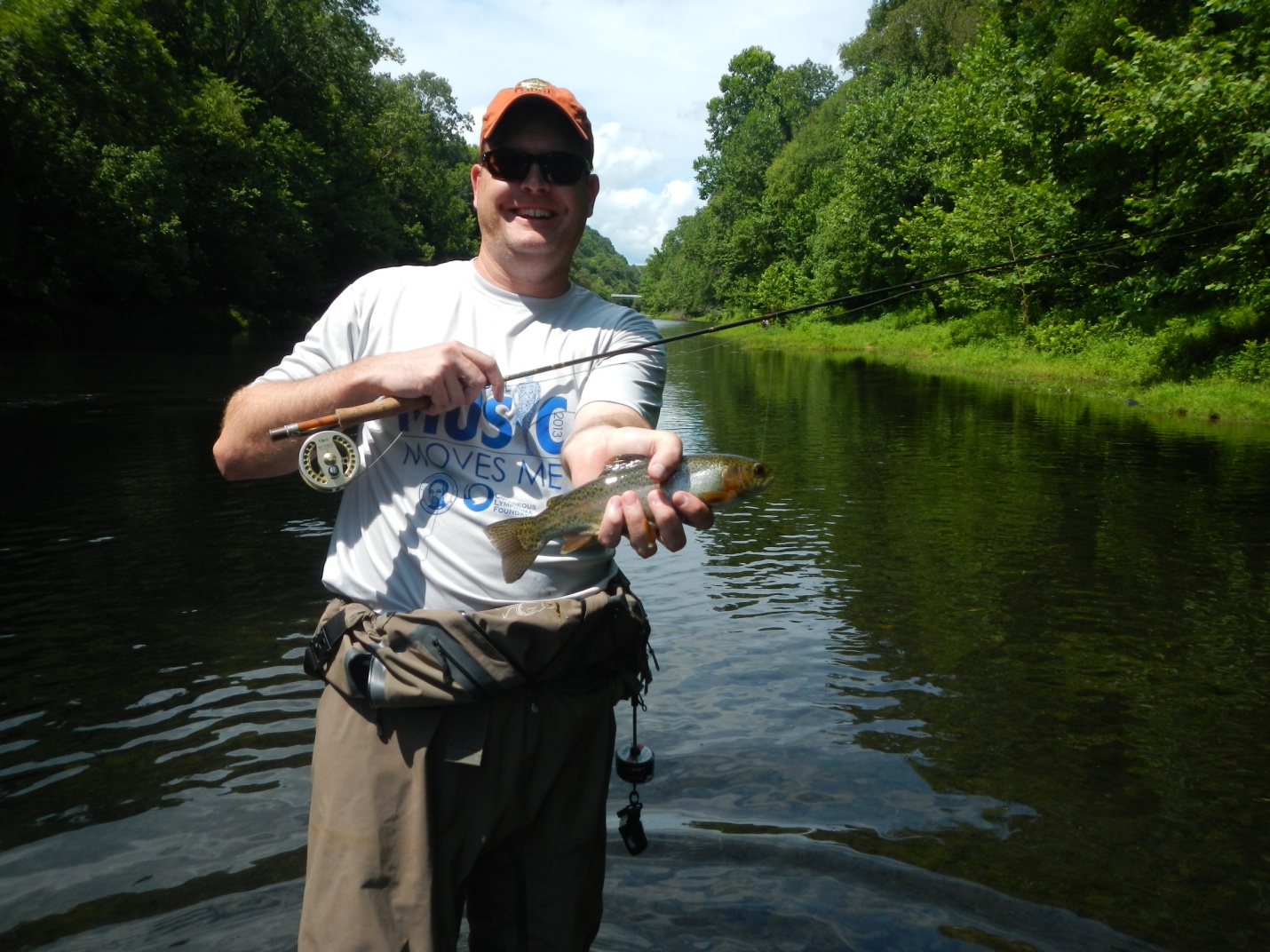
To get to the dam, follow State Road 121 to the end and take a left. The dam will be on your right after several miles, but don't take the entrance to the TVA dam. Take the second entrance on your right, which will be a boat ramp with parking just down from the dam.
Two warnings for the Elk. First, make sure to purchase a Tennessee Fishing License. Particularly as of late, TWRA officials have been checking for licenses. You can get a license online.
Second, make sure that TVA is not generating power. When TVA does this, it flushes a greater amount of water through its turbines. The river is unfishable and incredibly dangerous when this happens. Stay away! You can check TVA's generation schedule here.
Look carefully at the "Average Outflow" column. On the day I wrote this article in August 2014, it is at 240 cfs, which is very fishable.
Sipsey Fork
The Sipsey Fork emerges from Smith Lake dam near Jasper, Alabama. This is the only public trout water in the State. Flies are similar to those for the Elk.
The Sipsey is a slightly longer drive from Huntsville. Drive South on I-65 to Exit 299. Take a right and drive for a while -- I'm guessing a half-hour. If you cross the bridge for the river, you've gone too far. There is a great fly shop on the left right before the Sipsey bridge -- The Riverside Fly Shop.
Most importantly, the fly shop posts the generation schedule for the Sipsey. Always check before you go.
Across the street from the fly shop is an access road leading up to the dam. Drive to the end of the road where there's a power house. From the powerhouse to the dam is very fishable water. Access is more difficult than the Elk. The river has extremely deep and steep banks. It's pretty easy to walk-in at the powerhouse or the dam. But, the area in between requires a climb. There's one, big turn-hole about halfway that seems to hold a lot of fish.
I've only fished the Sipsey a handful of times. I've caught fish every time, so it might be a good option for you. I prefer the Elk because it's a little closer to my house.
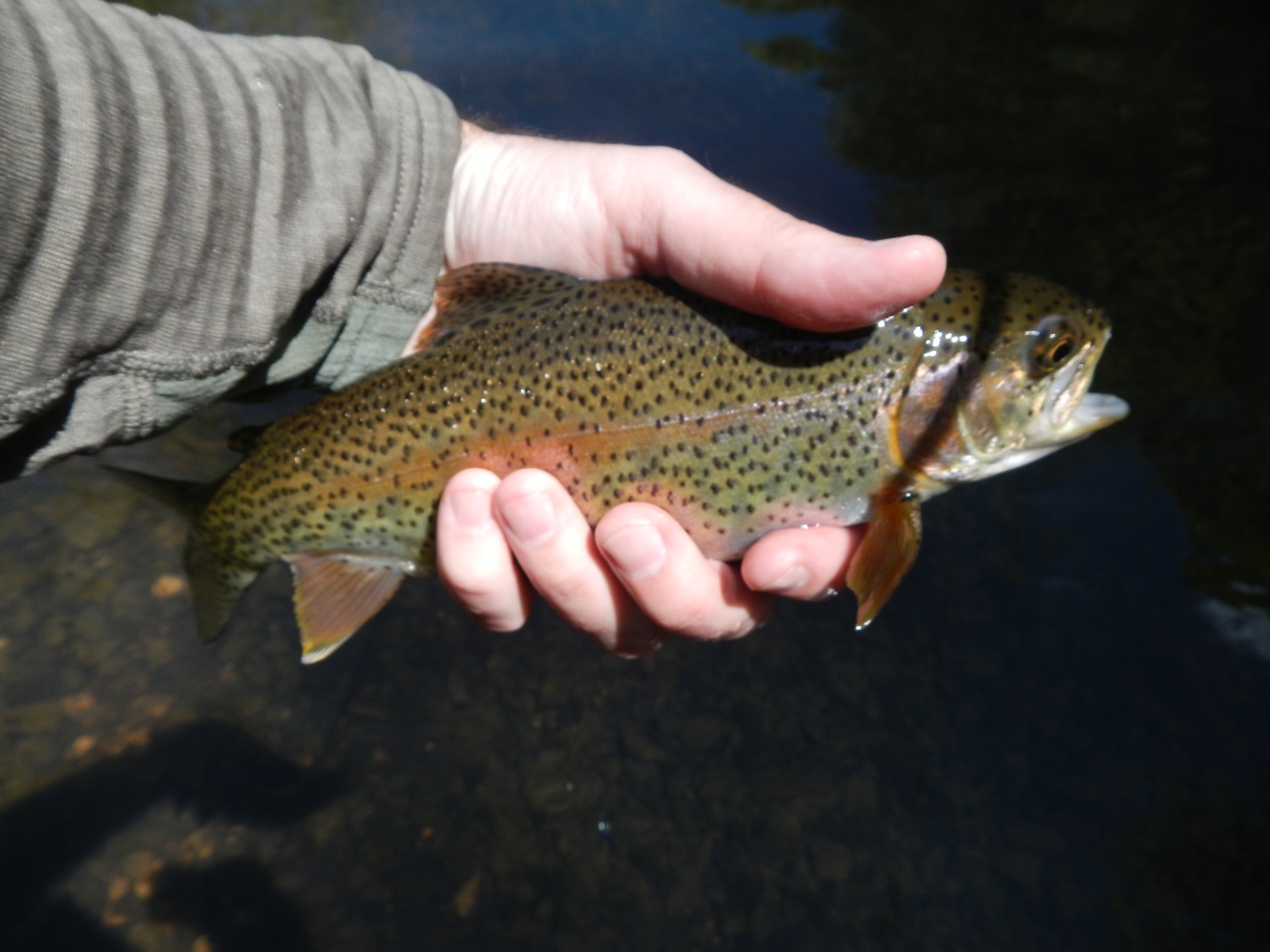
You will also need an Alabama fishing license. From this link, it doesn't look like Alabama sells then online. I've always bought mine at a local shop.
Conclusion
I hope this article has given you some ideas about fly fishing in North Alabama. I'm always looking for more information and more places to fish, so feel free to e-mail the site with more information.



